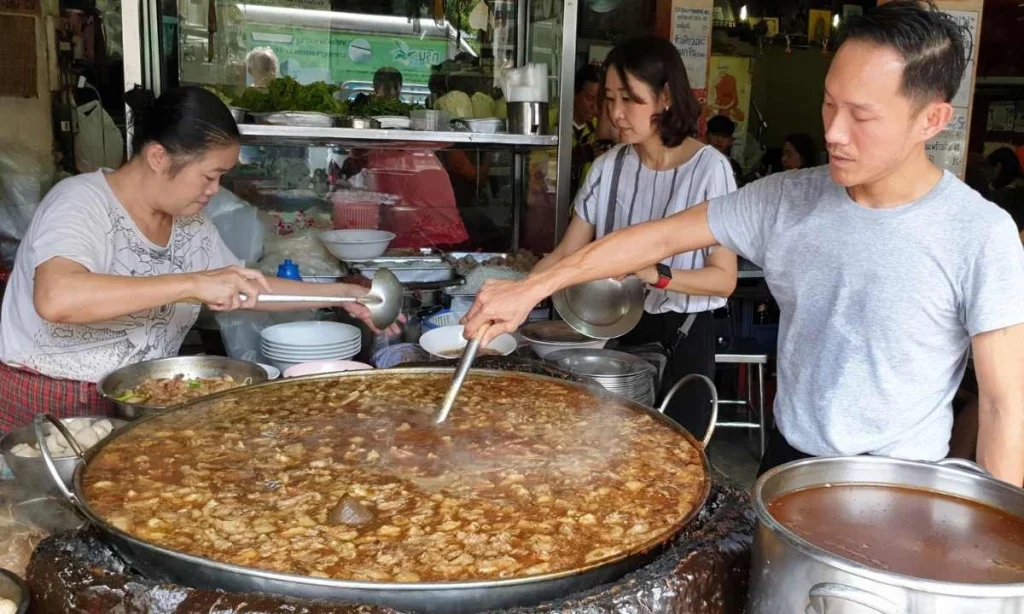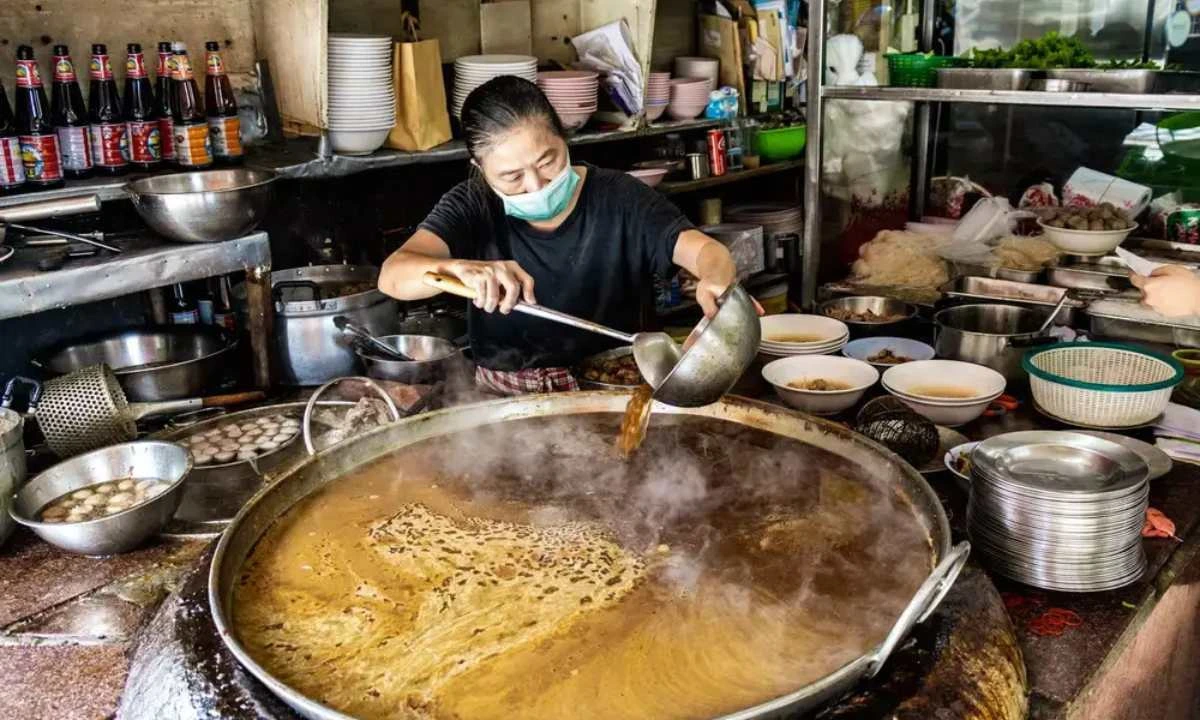This Is A Soup That’s Been Cooking For 50 Years!
Imagine tasting history in every spoonful of soup. In Bangkok, Thailand, there’s a small restaurant called Wattana Panich. It serves beef noodle soup simmering with flavors developed over the past 45 years. This isn’t just any soup — it’s a culinary tradition that has become a piece of living history.
Locals and tourists alike flock to this family-run eatery to savor the unique taste of its soup. It continues to be simmered daily, preserving its decades-old essence. But what makes this soup so special, and what does this taste like? Let’s dive in to find out.
The Legacy of Wattana Panich
Origins of the Recipe
The journey of Wattana Panich began over 60 years ago when the current owner, Nattapong Kaweeantawong’s grandfather, opened the restaurant near Bangkok’s Chao Phraya River. Back then, the recipe wasn’t written down. Instead, it relied on the cook’s instincts, tasting and adjusting flavors to perfection.
“Since my grandfather’s time, we’ve never really had a set recipe about how much of each ingredient to put in. The person making the soup will constantly have to taste it to know what needs to be added,” says Nattapong.
The philosophy of relying on intuition instead of rigid recipes has been passed down through three generations of the family, creating a soup that embodies tradition, skill, and experience.

Generational Craftsmanship
Nattapong learned the art of making the perfect soup from his father. “When I first started in the business, my dad would make the soup, and I would taste it to understand what the perfect taste is,” he says. Now, as the main caretaker of the recipe, he hopes to pass the tradition to his 12-year-old daughter.
His father, however, jokes that he’s still the better cook. “Of course, it’s me,” says his father confidently. “I’ve been doing it since before he was born.”
Smiling, Nattapong responds, “If I can make a soup that’s as good as my father’s, that’s enough.” But when asked about his skills 10 years from now, he laughs and declares, “Even better!”
The Science Behind the Flavor
The Simmering Process
Wattana Panich’s soup-making process is as intricate as it is fascinating. At the end of each day, the family cleans the massive pot and keeps a small amount of soup simmering overnight. This forms the base for the next day’s batch, allowing the flavors to develop over time.
“Lots of people think we never clean the pot. But we clean it every evening. We remove the soup from the pot, then keep a little bit simmering overnight.” says Nattapong.
Each batch is infused with nearly a dozen Chinese herbs, along with spices like garlic, cinnamon, black pepper, and cilantro root. The beef, which makes up the heart of the soup, is slow-cooked for seven hours to ensure tenderness and flavor absorption.
Role of the Massive Pot
The soup is cooked in an enormous 5-foot-wide pot, which is not just a cooking tool but also a tourist attraction. The pot brims with thick, dark broth, constantly stirred by Nattapong or another family member. Chunks of beef float on the surface, enticing anyone who passes by the busy street where the shop is located.
Aged Flavors and Fermentation
For many in Asia, the idea of preserving and aging food is nothing new. Fermentation and extended cooking times enhance flavors, and Wattana Panich’s soup is no exception. First-time visitor Ussanee Seesod, who runs food-walk tours in Bangkok, says, “For Asian people, we’re quite familiar with fermented things and something you age for very long, so this does not bother me at all.”

What Locals and Tourists Say
Local Nostalgia
For Bangkok residents, Wattana Panich isn’t just a restaurant — it’s part of their lives. Indi Rakamnuaykit, a 24-year-old customer, has been coming here since childhood. “My earliest memory coming here, I was 5 or 6, maybe,” he recalls. His father has been visiting the restaurant since he was 11.
“The prices were super good. According to my dad, he’d say coming here with a large family would never break the bank. You would always come here because you expected top-quality food and homey service,” says Indi.
Tourist Magnet
The soup’s fame has spread far beyond Bangkok. Chris Brady, an Australian businessman, visits Wattana Panich every time he’s in the city. “Yes, I’m a Wattana Panich junkie,” he admits. “The first time I came was seven or eight years ago. One of my mates from Singapore said I had to come here, and I’ve been coming here ever since.”
Brady believes this is the best beef noodle soup in the world. “It’s the stock. There’s a bit of sweetness; there’s a real beefiness; there’s a lot of depth to the flavor,” he says. “It’s not just Maggi beef stock mixed with water.”
The Future of a Timeless Tradition
Nattapong’s Vision
As Wattana Panich continues to draw crowds, Nattapong hopes his daughter will carry on the family legacy. He envisions the soup simmering for decades to come, keeping the tradition alive.
Balancing Tradition and Modernity
Despite the challenges of operating in a trendy neighborhood, Wattana Panich remains true to its roots. Nattapong reflects on how owning the shop, instead of renting, has been a blessing in the face of rising property prices.
The restaurant stands as a testament to the power of tradition, blending history, culture, and culinary expertise. It inspires other food artisans to preserve their heritage, proving that sometimes, the best recipes are those shaped by time and love.
Conclusion
Wattana Panich’s 45-year-old soup isn’t just a dish — it’s a story of family, tradition, and culture simmering together. From the enormous pot to the meticulous cooking process, every detail contributes to an extraordinary experience that has captivated locals and travelers alike.
Would you travel to Bangkok to taste history in a single bowl of soup? For many, the answer is a resounding yes.
Also read,
NASA Finds Mutant Sharks Living In Volcanoes | Volcano Spewed Mutant Sharks Into The Ocean!







